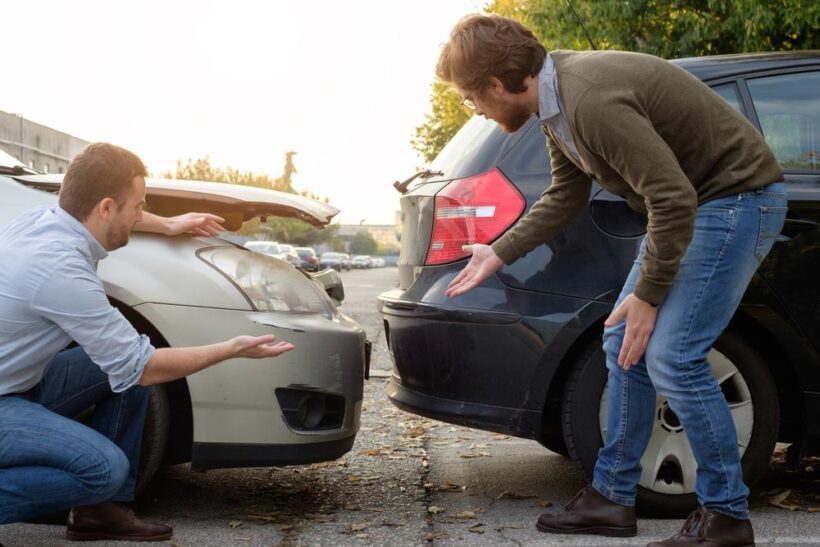You can take precautions everyday while driving but car accidents can still happen because unfortunately, some drivers can really be negligent. When it comes to suing for damages caused by the accident, proving negligence is an important factor in determining fault. Knowing how to prove negligence in a car accident lawsuit is crucial if you wish to be successful in your case.
If you’ve been involved in a car accident caused by someone else’s negligence, read on to learn more about how to prove it and get the compensation you deserve.
Definition Of Negligence

According to superlawyerdoug.com, negligence is the failure to exercise a reasonable degree of care in a particular situation. In a car accident lawsuit, it refers to the breach of duty that one party owes to another that results in harm or injury. Negligence may be based on either the driver’s actions or the car’s mechanical condition.
To prove negligence, an individual must demonstrate that the defendant was responsible for causing the accident and had a duty of care to avoid it. This can be done by showing that the driver was negligent in their actions, such as failing to obey traffic laws, driving too fast, or being distracted while driving.
Alternatively, negligence may have been caused by faulty brakes or other mechanical issues with the car itself. In either case, evidence must be provided that shows that the defendant was liable for causing the accident and had a duty of care towards others on the road. The burden of proof lies with the plaintiff who must show that they suffered damages due to someone else’s negligence. All relevant facts and evidence should be presented in court so that a judge can make an informed decision.
Elements Of A Negligence Case

To prove negligence in a car accident lawsuit, the plaintiff must establish four essential elements.
- First, the defendant must have owed a duty of care to the plaintiff. This means that the individual or entity must have had an obligation to act in a certain way and not cause harm to the plaintiff.
- Second, this duty of care must have been breached. This means that the defendant did not act in a responsible manner and caused injury or damage as a result.
- Third, causation must be established; that is, it must be shown that the defendant’s actions were directly responsible for causing harm to the plaintiff.
- Fourth, damages must also be proven; that is, it must be shown that the plaintiff suffered losses as a result of being harmed by the defendant’s actions.
These elements form the basis of any successful negligence claim in court. If any one of these elements cannot be proven, then it is likely that the court will find in favor of the defendant and dismiss any claims made by the plaintiff against them.
Thus, it is important for plaintiffs to ensure they can provide evidence to support each element of their negligence case before filing a lawsuit. We’ve covered these elements in detail below:
Duty Of Care
To prove negligence in a car accident lawsuit, it is essential to demonstrate that the defendant owed the plaintiff a duty of care. This means showing that the defendant had an obligation to act in a way that would not cause injury or harm. Duty of care is based on the reasonable person standard, meaning that the defendant should have acted as any reasonable person would in similar circumstances.
The plaintiff must then demonstrate that the defendant failed to meet this standard and breached their duty of care by behaving negligently. To do so, they must provide evidence of how this breach led to damages suffered by the plaintiff, such as physical injuries or property damage caused by the accident. Establishing negligence in a car accident lawsuit requires demonstrating this duty of care and breach thereof.
Breach Of Duty
To prove negligence in a car accident lawsuit, the plaintiff must demonstrate that the defendant breached their duty of care. This means that they must show that the defendant did not act as a reasonable person would have under similar circumstances. To do this, the plaintiff must establish what type of duty of care was owed in the situation, and then provide evidence that it was violated.
In most cases, drivers owe each other a duty of reasonable care to avoid causing harm. The standard of reasonable care is based on what an average driver would do in the same circumstances. If the plaintiff can show that the defendant failed to exercise this reasonable care, then it may be determined that they breached their duty of care and are liable for any damage caused by their actions.
Causation And Damages
To prove negligence, the plaintiff must then show that the breach of duty caused their damages. To do this, they must establish a causal link between the defendant’s conduct and the harm suffered. This means that, in order for there to be liability, the defendant’s actions must have been a “substantial factor” in causing the injury. It is not enough to simply show that the defendant’s conduct preceded or was related to the injury; rather, it must be shown that there would have been no harm but for the defendant’s actions.
If causation can be established, then a plaintiff may seek compensatory damages as compensation for their losses. Compensatory damages are designed to make up for any economic losses suffered by a plaintiff due to an injury. This can include medical costs, lost wages from missed work days and other out-of-pocket expenses incurred due to an injury.
Evidence Needed To Prove Negligence

To prove negligence in a car accident lawsuit, it is necessary to present evidence that shows the accused driver was at fault. Generally, there must be proof of four elements: duty of care owed, breach of duty, causation, and damages. To establish these four elements, certain types of evidence must be introduced.
Eyewitness testimony from people who saw the accident can be significant in proving negligence. Photos or videos taken of the scene and vehicles involved are also helpful for assessing liability. Police or accident reports can provide additional evidence about what happened at the scene. Additionally, medical records and bills may demonstrate how an injury was sustained as a result of the crash. All this evidence should be carefully evaluated to determine if sufficient proof of negligence exists to win a case.
Expert Testimony
In a car accident lawsuit, expert testimony is often used to prove negligence. Expert witnesses may include medical professionals, engineers, and accident reconstructionist. Expert witnesses can provide their opinion on the cause of the accident by examining evidence such as police reports, medical records, and photos of the crash site. They can also evaluate any physical damages that may have occurred due to the accident.
The testimony of an expert witness can be very persuasive in court because these individuals typically have experience related to the case. Their knowledge and skills make them uniquely qualified to analyze information and draw conclusions about a situation that an ordinary person may not be able to do. As a result, it is important for attorneys representing clients in a car accident lawsuit to retain an expert witness who can provide compelling testimony on their client’s behalf.
Statute Of Limitations
Moving on from expert testimony, the statute of limitations for filing a car accident lawsuit varies from state to state. It’s important to understand the time limits for your state and be aware of them as soon as possible after an accident occurs. Negligence must be proven within these time frames, or else a potential lawsuit may not be allowed to proceed.
Sometimes an insurance company may try to use this time limit against the plaintiff in order to avoid paying out for damages. This is why it’s essential to act quickly and gather evidence that can prove negligence. Witnesses, photographs and videos of the scene are all important pieces of evidence that can help establish fault in a car accident lawsuit. Gathering such evidence right away will help you build a strong case should you decide to file a claim in court.
Conclusion

In conclusion, proving negligence in a car accident lawsuit can be a difficult task. It’s important to understand the elements of a negligence case, including duty of care, breach of duty, causation, and damages. Gathering evidence is key; this includes expert testimony and any applicable statutes of limitations.
It’s my hope that this article has provided you with an understanding of the basics of how to prove negligence in a car accident lawsuit. When dealing with something as serious as a car accident, it’s essential that you get all the facts straight so that your case is properly represented in court. I encourage you to seek out legal advice if you have further questions or need assistance with gathering evidence or preparing your argument.

